Papers by Martin Steinhoff
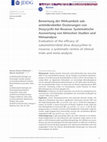
JDDG: Journal der Deutschen Dermatologischen Gesellschaft, 2021
ZusammenfassungHintergrundNiedrig dosiertes Doxycyclin (sub‐antimicrobial dose doxycycline, SDD) ... more ZusammenfassungHintergrundNiedrig dosiertes Doxycyclin (sub‐antimicrobial dose doxycycline, SDD) ist eine antimikrobielle Substanz, die bei häufigen entzündlichen Hauterkrankungen zu einer Besserung des Krankheitsbildes zu führen scheint. Derzeit liegen nur wenige Daten zur allgemeinen Wirksamkeit, zur notwendigen Behandlungsdauer und zur optimalen Patientenauswahl bei Rosacea vor. Wir haben daher die Wirksamkeit sub‐antimikrobieller Dosen von Doxycyclin bei Rosacea papulopustulosa (RPP) untersucht. Gleichzeitig wollten wir herausarbeiten, welche Patienten für diesen Behandlungsansatz am besten geeignet sind.MethodenIm Zeitraum von Juli bis September 2019 wurde eine umfangreiche Literaturrecherche in fünf Datenbanken durchgeführt; der verwendete Suchbegriff war „rosacea” UND „doxycycline”.ErgebnisseUnsere Datenbankrecherche fand potenziell relevante Studien. Die allgemeine Metaanalyse fand keinen signifikanten Unterschied zwischen SDD und den Vergleichspräparaten (RR: 1,12; 95 %‐KI:...
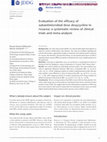
JDDG: Journal der Deutschen Dermatologischen Gesellschaft, 2020
SummaryBackgroundLow‐dose doxycycline (SDD) is an antimicrobial agent that appears to improve com... more SummaryBackgroundLow‐dose doxycycline (SDD) is an antimicrobial agent that appears to improve common inflammatory skin diseases. Few data are available regarding the overall effectiveness, appropriate length of treatment and optimal patient selection for rosacea. We therefore reviewed the efficacy of sub‐antimicrobial doses of SDD in papulopustular rosacea (PPR) and aimed to determine the most suitable patients for this approach.MethodsFrom July to September 2019, we carried out a comprehensive search of literature from five databases, using a combination of “rosacea” AND “doxycycline”.ResultsOur search yielded 532 potentially relevant studies. Our meta‐analysis showed no significant difference between SDD and a comparator (RR: 1.12, 95 % CI: 0.78–1.62, I2 = 86 %). Subgroup analysis of studies comparing doxycycline with placebo yielded a clear difference in favor of doxycycline (RR: 1.45, 95 % CI: 1.22–1.72, I2 = 31 %), while subgroup analysis of studies comparing active drugs rev...
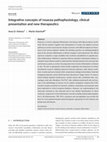
Experimental Dermatology, 2016
Rosacea is a chronic relapsing inflammatory skin disease with high prevalence worldwide. Recent r... more Rosacea is a chronic relapsing inflammatory skin disease with high prevalence worldwide. Recent research suggests that dysregulation of innate and adaptive immune pathways as well as neurovascular changes is present, with different degrees of importance in the various subtypes. Neither the aetiology, genetics nor pathophysiological basis of the vascular, inflammatory or fibrotic changes is well understood. The clinical spectrum comprises a huge variability from erythema (vasodilation) to papules/pustules (inflammatory infiltrate) to phymata (fibrosis, glandular hyperplasia) making it a valuable human disease model to understand the interplay between the neurovascular and immune systems as well as the progression from chronic inflammation to fibrosis in skin. The lack of appropriate animal models emphasizes the importance of further translational research validating observed molecular pathways under disease conditions. A wide spectrum of physical (UV, temperature), biological (microb...
Seminars in Cell & Developmental Biology, Apr 1, 2023
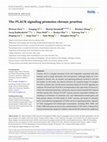
The FASEB Journal, May 21, 2022
Chronic itch is a complex sensation of the skin frequently associated with skin diseases, such as... more Chronic itch is a complex sensation of the skin frequently associated with skin diseases, such as atopic dermatitis (AD) and psoriasis. Although Serpin E1 is implicated in chronic itch, its receptor and signaling pathways involved in itch are not known. In this study, the clinical relevance of a putative Serpin E1 receptor PLAUR to chronic itch, and the neuro‐cutaneous Serpin E1‐PLAUR signaling are explored. We found that PLAUR is overexpressed in skin specimens of human lesional AD and lesional psoriasis, and sensory neurons innervating MC903‐induced AD‐like murine skin. Murine PLAUR+ sensory neurons responded to Serpin E1, resulting in enrichment of numerous itch‐ and inflammation‐related genes and their protein release. PLAUR resides in TLR2+ neurons and Serpin E1 stimulus led to transcriptional upregulation of TLR2 and its co‐signaling proteins. Agonists of TLR2 propagated itch‐related gene transcription including BNP, OSM, and PAR2. OSM induced acute itch in mice and promoted G‐CSF and IL‐8 release from human keratinocytes. Serpin E1 inhibitor reduced MC903‐induced itch, epidermal hyperplasia, immunocyte infiltration, and resulted in lower transcription/expression levels of Serpin E1 and OSM. Taken together, the PLAUR‐TLR2‐OSM signaling promotes skin‐nerve communication, cutaneous inflammation, and itch, all feeding into an aggravation of AD and exaggerated itch circuits.

Seminars in Cancer Biology, Nov 1, 2022
Cutaneous T cell lymphomas (CTCLs) are a heterogeneous group of lymphoproliferative neoplasms, wh... more Cutaneous T cell lymphomas (CTCLs) are a heterogeneous group of lymphoproliferative neoplasms, which exhibit a wide spectrum of immune-phenotypical, clinical, and histopathological features. The biology of CTCL is complex and remains elusive. In recent years, the application of next-generation sequencing (NGS) has evolved our understanding of the pathogenetic mechanisms, including genetic aberrations and epigenetic abnormalities that shape the mutational landscape of CTCL and represent one of the important pro-tumorigenic principles in CTCL initiation and progression. Still, identification of the major pathophysiological pathways including genetic and epigenetic components that mediate malignant clonal T cell expansion has not been achieved. This is of prime importance given the role of malignant T cell clones in fostering T helper 2 (Th2)-bias tumor microenvironment and fueling progressive immune dysregulation and tumor cell growth in CTCL patients, manifested by the secretion of Th2-associated cytokines and chemokines. Alterations in malignant cytokine and chemokine expression patterns orchestrate the inflammatory milieu and influence the migration dynamics of malignant clonal T cells. Here, we highlight recent insights about the molecular mechanisms of CTCL pathogenesis, emphasizing the role of cytokines, chemokines, and associated downstream signaling networks in driving immune defects, malignant transformation, and disease progression. In-depth characterization of the CTCL immunophenotype and tumoral microenvironment offers a facile opportunity to expand the therapeutic armamentarium of CTCL, an intractable malignant skin disease with poor prognosis and in dire need of curative treatment approaches.
This is a PDF file of an unedited peer-reviewed manuscript that has been accepted for publication... more This is a PDF file of an unedited peer-reviewed manuscript that has been accepted for publication. NPG are providing this early version of the manuscript as a service to our customers. The manuscript will undergo copyediting, typesetting and a proof review before it is published in its final form. Please note that during the production process errors may be discovered which could affect the content, and all legal disclaimers apply.
Seminars in Cancer Biology, Jul 1, 2023
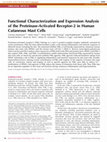
Journal of Investigative Dermatology, Apr 1, 2006
Proteinase-activated receptor-2 (PAR 2) belongs to a new G protein-coupled receptor subfamily act... more Proteinase-activated receptor-2 (PAR 2) belongs to a new G protein-coupled receptor subfamily activated by serine proteinases. PAR 2 has been demonstrated to play a role during inflammation and immune response in different tissues including the skin. We examined whether PAR 2 is functionally expressed by cutaneous human primary skin mast cells (HPMC) and the human mast cell line 1 (HMC-1). Reverse transcription-polymerase chain reaction and FACS analysis show expression of PAR 2 both at the RNA and protein level. HPMCs and HMC-1 also express PAR 1 , PAR 3 , and PAR 4. Ca-mobilization studies demonstrate functional PAR 2 expressed by human skin mast cells, as shown by natural and synthetic PAR 2 agonists. PAR 2 agonists induced histamine release from HPMC indicating a role of PAR 2 in regulating inflammatory and immune responses by skin mast cells. Doubleimmunofluorescence staining reveals colocalization of PAR 2 with tryptase in the majority of human skin mast cells. In conclusion, trypsin and tryptase as well as specific agonists for PAR 2 were able to induce Ca 2 þ mobilization in HPMCs, and agonists of PAR 2 induce the release of histamine from these cells. Thus, PAR 2 may be an important regulator of skin mast cell function during cutaneous inflammation and hypersensitivity.
GBM Annual Fall meeting M�nster 2004, Sep 1, 2004

Seminars in Cancer Biology, Nov 1, 2022
Signaling involving chemokine receptor CXCR4 and its ligand SDF-1/CXL12 has been investigated for... more Signaling involving chemokine receptor CXCR4 and its ligand SDF-1/CXL12 has been investigated for many years for its possible role in cancer progression and pathogenesis. Evidence emerging from clinical studies in recent years has further established diagnostic as well as prognostic importance of CXCR4 signaling. CXCR4 and SDF-1 are routinely reported to be elevated in tumors, distant metastases, which correlates with poor survival of patients. These findings have kindled interest in the mechanisms that regulate CXCR4/SDF-1 expression. Of note, there is a particular interest in the epigenetic regulation of CXCR4 signaling that may be responsible for upregulated CXCR4 in primary as well as metastatic cancers. This review first lists the clinical evidence supporting CXCR4 signaling as putative cancer diagnostic and/or prognostic biomarker, followed by a discussion on reported epigenetic mechanisms that affect CXCR4 expression. These mechanisms include regulation by non-coding RNAs, such as, microRNAs, long non-coding RNAs and circular RNAs. Additionally, we also discuss the regulation of CXCR4 expression through methylation and acetylation. Better understanding and appreciation of epigenetic regulation of CXCR4 signaling can invariably lead to identification of novel therapeutic targets as well as therapies to regulate this oncogenic signaling.
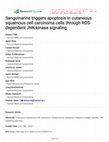
Research Square (Research Square), Jul 18, 2023
Cutaneous Squamous Cell Carcinoma (cSCC), the second most common non-melanoma skin cancer, origin... more Cutaneous Squamous Cell Carcinoma (cSCC), the second most common non-melanoma skin cancer, originates from the malignant transformation of atypical epidermal keratinocytes. In recent decades, contemporary research has widened our comprehension of the molecular pathogenesis of cSCC, propelling the evolution of effective therapies in the management of cSCC. Sanguinarine (Sng), a quaternary benzophenanthridine alkaloid, is a multifaceted natural agent. In consideration of its potent anti-neoplastic activity, the present study evaluated the in vitro cytotoxicity of Sng against primary (A431) and metastatic (A388) cSCC cells and delineated its underlying molecular mechanisms. Treatment with Sng signi cantly inhibited cell proliferation by inducing sub-G0/G1 cell-cycle arrest and apoptosis in cSCC cells. Sng evoked reactive oxygen species (ROS) generation, intracellular glutathione (GSH) depletion, mitochondrial transmembrane potential (ΔΨ m) depolarization, and the activation of the JNK pathway as well as that of caspase-3,-8,-9, and PARP. Application of the antioxidant N-acetyl cysteine (NAC) inhibited ROS production, replenished GSH levels, and abolished the apoptosis induced by Sng via downregulating JNK. Our results also showed that z-VAD-FMK, a pan-caspase inhibitor, e ciently blocked cell death induced by Sng. Moreover, pharmacological inhibition of JNK by SP600125 mitigated Snginduced apoptosis. Finally, Sng ablated the stemness potential in metastatic cSCC cell-derived spheroids. Cumulatively, this investigation revealed that Sng triggers apoptosis in cSCC cells through ROSdependent activation of the MAPK signaling pathway, thus suggesting its therapeutic potential.
Experimental Dermatology, Apr 1, 2020
Psoriasis is a common systemic immune-mediated skin disorder that results from a polygenic predis... more Psoriasis is a common systemic immune-mediated skin disorder that results from a polygenic predisposition in combination with exacerbating environmental trigger factors like trauma, medication and infection. [1] However, robust studies support also the involvement of an often disregarded trigger factor that can effectively spark psoriasis exacerbation: psychological stress. [2] First psoriatic events appear at any age with two main onset peaks around ages 20-30 and 50-60. The prevalence of psoriasis has been reported to be around 2% of the world population ranging from 0.91% in the United States to 8.5% in Norway, with higher prevalence occurring in the northern hemispheres. [3] Based on disease incidence, psoriasis constitutes a major public health problem and is further associated
Seminars in Cell & Developmental Biology, Oct 1, 2022

JAAD case reports, Oct 1, 2021
ACH: acrodermatitis continua of Hallopeau IL: interleukin TNF: tumor necrosis factor INTRODUCTION... more ACH: acrodermatitis continua of Hallopeau IL: interleukin TNF: tumor necrosis factor INTRODUCTION The etiology and pathogenesis of acrodermatitis continua of Hallopeau (ACH), a form of localized pustular psoriasis, remain poorly understood. Despite the availability of several treatment options, patients with ACH often have an insufficient response to therapy. No standardized guidelines, including disease severity score, have been developed for ACH management, and molecular profiling of ACH has yet to be established. Therefore, the development of more optimal and personalized therapeutic options with novel mechanisms of action is an urgent medical need. In this report, we evaluate the efficacy and molecular profile of antieinterleukin (IL)-23p19 (guselkumab [Tremfya, Janssen]) and antietumor necrosis factoralfa (TNF-a) (certolizumab [Cimzia, UCB]) therapy for the treatment of severe ACH before and during pregnancy.
Seminars in Cancer Biology, Dec 1, 2022
Biomedicine & Pharmacotherapy, Dec 1, 2022
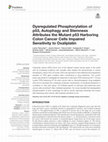
Frontiers in Oncology, Aug 28, 2020
Colorectal cancer (CRC) forms one of the highest ranked cancer types in the world with its increa... more Colorectal cancer (CRC) forms one of the highest ranked cancer types in the world with its increasing incidence and mortality rates despite the advancement in cancer therapeutics. About 50% of human CRCs are reported to have defective p53 expression resultant of TP53 gene mutation often contributing to drug resistance. The current study was aimed to investigate the response of wild-type TP53 harboring HCT 116 and mutant TP53 harboring HT 29 colon cancer cells to chemotherapeutic drug oxaliplatin (OX) and to elucidate the underlying molecular mechanisms of sensitivity/resistance in correlation to their p53 status. OX inhibited growth of wild-type p53-harboring colon cancer cells via p53/p21-Bax mediated apoptosis. Our study revealed that dysregulated phosphorylation of p53, autophagy as well as cancer stemness attributes the mutant p53-harboring colon cancer cells impaired sensitivity to OX.
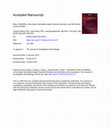
Journal of Investigative Dermatology, Nov 1, 2019
The role of soluble N-ethylmaleimide-sensitive factor attachment protein receptors (SNAREs) in at... more The role of soluble N-ethylmaleimide-sensitive factor attachment protein receptors (SNAREs) in atopic dermatitis (AD) is unknown. This study is envisioned to lead to the previously unreported SNARE function in AD-related cytokine secretion and epidermis-nerve communication. Herein, we report that various cytokines were simultaneously upregulated and co-released in the innate immunity-activated primary human keratinocytes (phKCs). AD-related cytokines thymic stromal lymphopoietin (TSLP), endothelin-1 (ET-1) or inflammatory TNF-α activated distinct but overlapping sensory neurons. Interestingly, TNF-α potentiated TSLP-induced Ca 2+-influx, whereas ET-1 caused itch-selective B-type natriuretic peptide (BNP) release. In phKCs, BNP upregulated genes promoting dermatological and neuroinflammatory diseases and conditions. VAMP3, SNAP-29 and syntaxin4 proved important in driving cytokine release from phKCs. Depletion of VAMP3 inhibited nearly all the cytokine release including TSLP and ET-1. Accordingly, VAMP3 co-occurred with ET-1 in AD patient skin. Our study pinpoints the pivotal role of SNAREs in mediating cytokine secretion related to AD. VAMP3 is identified as a suitable target for developing broad-spectrum anti-cytokine therapeutics for controlling itch and atopic skin inflammation.

Several thermosensitive transient receptor potential channels (transient receptor potential vanil... more Several thermosensitive transient receptor potential channels (transient receptor potential vanilloid type-1, -3; transient receptor potential cation channel, subfamily A, member 1) have been implicated in itch. In contrast, the role of transient receptor potential vanilloid type-4 (TRPV4) in itch is unknown. Therefore, we investigated if TRPV4, a temperature-sensitive cation channel, plays an important role in acute itch in mice. Four different pruritogens, including serotonin (5-hydroxytryptamine [5-HT]), histamine, SLIGRL (protease-activated receptors 2/mas-related G-protein-coupled receptor C11 agonist), and chloroquine (mas-related G-protein-coupled receptor A3 agonist), were intradermally injected into mice and itch-related scratching behavior was assessed. TRPV4 knockout mice exhibited significantly fewer 5-HT-evoked scratching bouts compared with wild-type mice. Notably, no differences between TRPV4 knockout and wild-type mice were observed in the number of scratch bouts elicited by SLIGRL and histamine. Pretreatment with a TRPV4 antagonist significantly attenuated 5-HT-evoked scratching in vivo. Using calcium imaging in cultured primary murine dorsal root ganglion neurons, the response of neurons after 5-HT application, but not other pruritogens, was significantly lower in TRPV4 knockout compared with wild-type mice. A TRPV4 antagonist significantly suppressed 5-HT-evoked responses in dorsal root ganglion cells from wild-type mice. Approximately 90% of 5-HT-sensitive dorsal root ganglion neurons were immunoreactive for an antibody to TRPV4, as assessed by calcium imaging. These results indicate that 5-HT-induced itch is linked to TRPV4.











Uploads
Papers by Martin Steinhoff